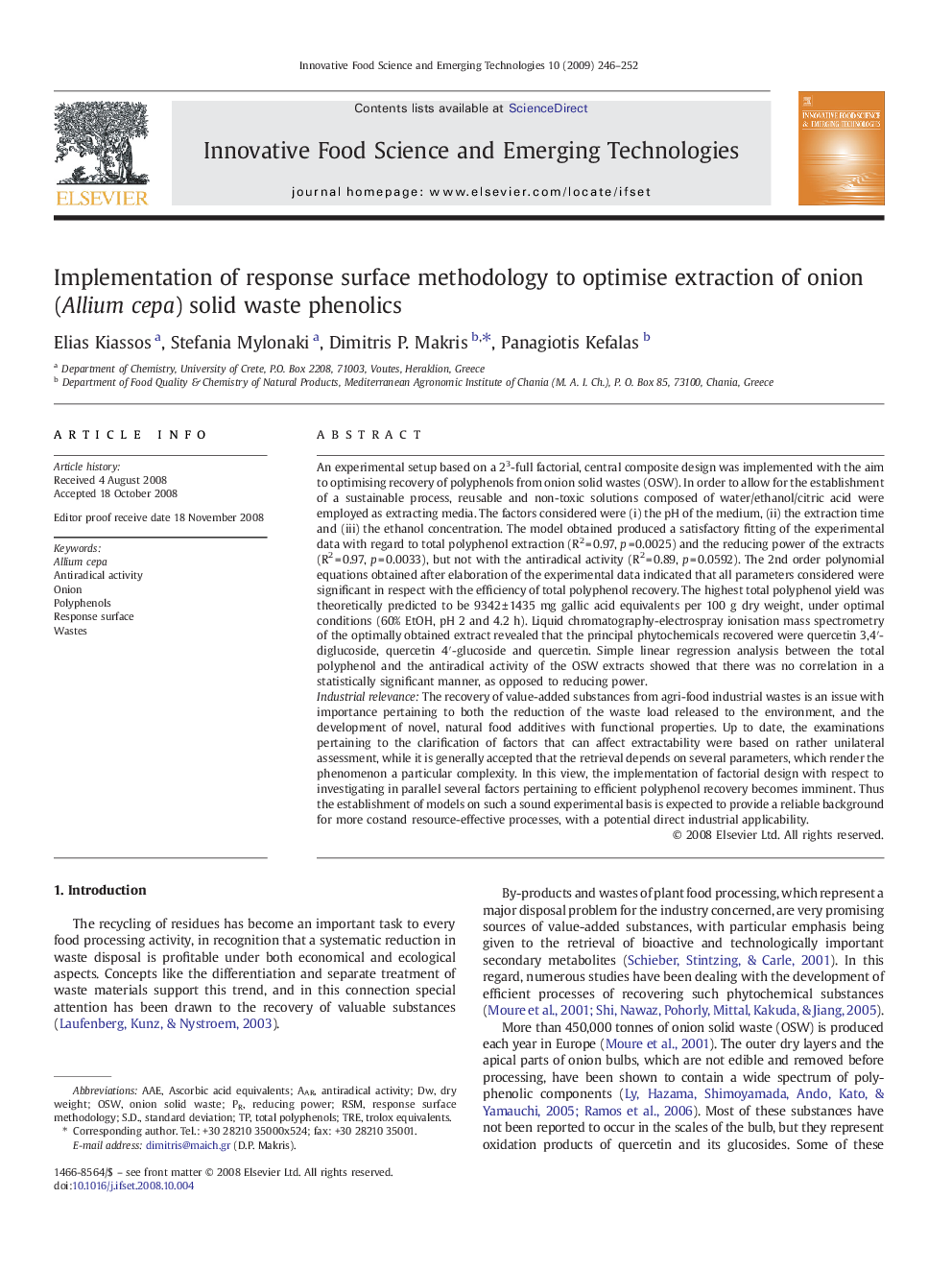| Article ID | Journal | Published Year | Pages | File Type |
|---|---|---|---|---|
| 2087224 | Innovative Food Science & Emerging Technologies | 2009 | 7 Pages |
An experimental setup based on a 23-full factorial, central composite design was implemented with the aim to optimising recovery of polyphenols from onion solid wastes (OSW). In order to allow for the establishment of a sustainable process, reusable and non-toxic solutions composed of water/ethanol/citric acid were employed as extracting media. The factors considered were (i) the pH of the medium, (ii) the extraction time and (iii) the ethanol concentration. The model obtained produced a satisfactory fitting of the experimental data with regard to total polyphenol extraction (R2 = 0.97, p = 0.0025) and the reducing power of the extracts (R2 = 0.97, p = 0.0033), but not with the antiradical activity (R2 = 0.89, p = 0.0592). The 2nd order polynomial equations obtained after elaboration of the experimental data indicated that all parameters considered were significant in respect with the efficiency of total polyphenol recovery. The highest total polyphenol yield was theoretically predicted to be 9342 ± 1435 mg gallic acid equivalents per 100 g dry weight, under optimal conditions (60% EtOH, pH 2 and 4.2 h). Liquid chromatography-electrospray ionisation mass spectrometry of the optimally obtained extract revealed that the principal phytochemicals recovered were quercetin 3,4′-diglucoside, quercetin 4′-glucoside and quercetin. Simple linear regression analysis between the total polyphenol and the antiradical activity of the OSW extracts showed that there was no correlation in a statistically significant manner, as opposed to reducing power.Industrial relevanceThe recovery of value-added substances from agri-food industrial wastes is an issue with importance pertaining to both the reduction of the waste load released to the environment, and the development of novel, natural food additives with functional properties. Up to date, the examinations pertaining to the clarification of factors that can affect extractability were based on rather unilateral assessment, while it is generally accepted that the retrieval depends on several parameters, which render the phenomenon a particular complexity. In this view, the implementation of factorial design with respect to investigating in parallel several factors pertaining to efficient polyphenol recovery becomes imminent. Thus the establishment of models on such a sound experimental basis is expected to provide a reliable background for more costand resource-effective processes, with a potential direct industrial applicability.
